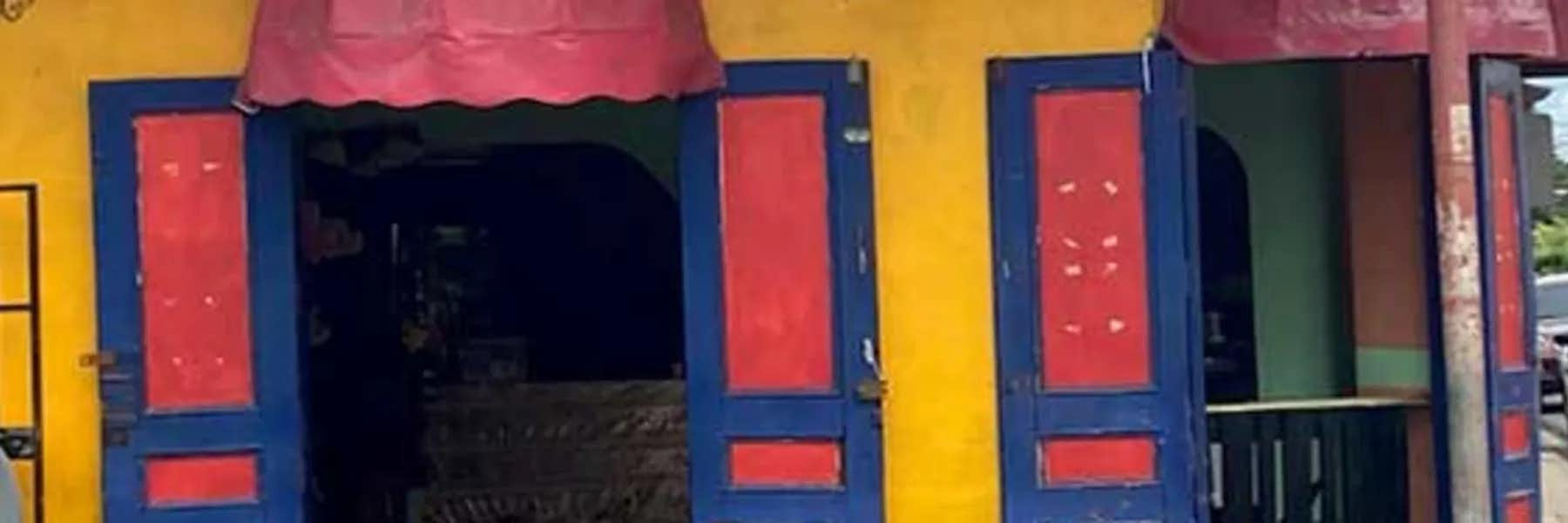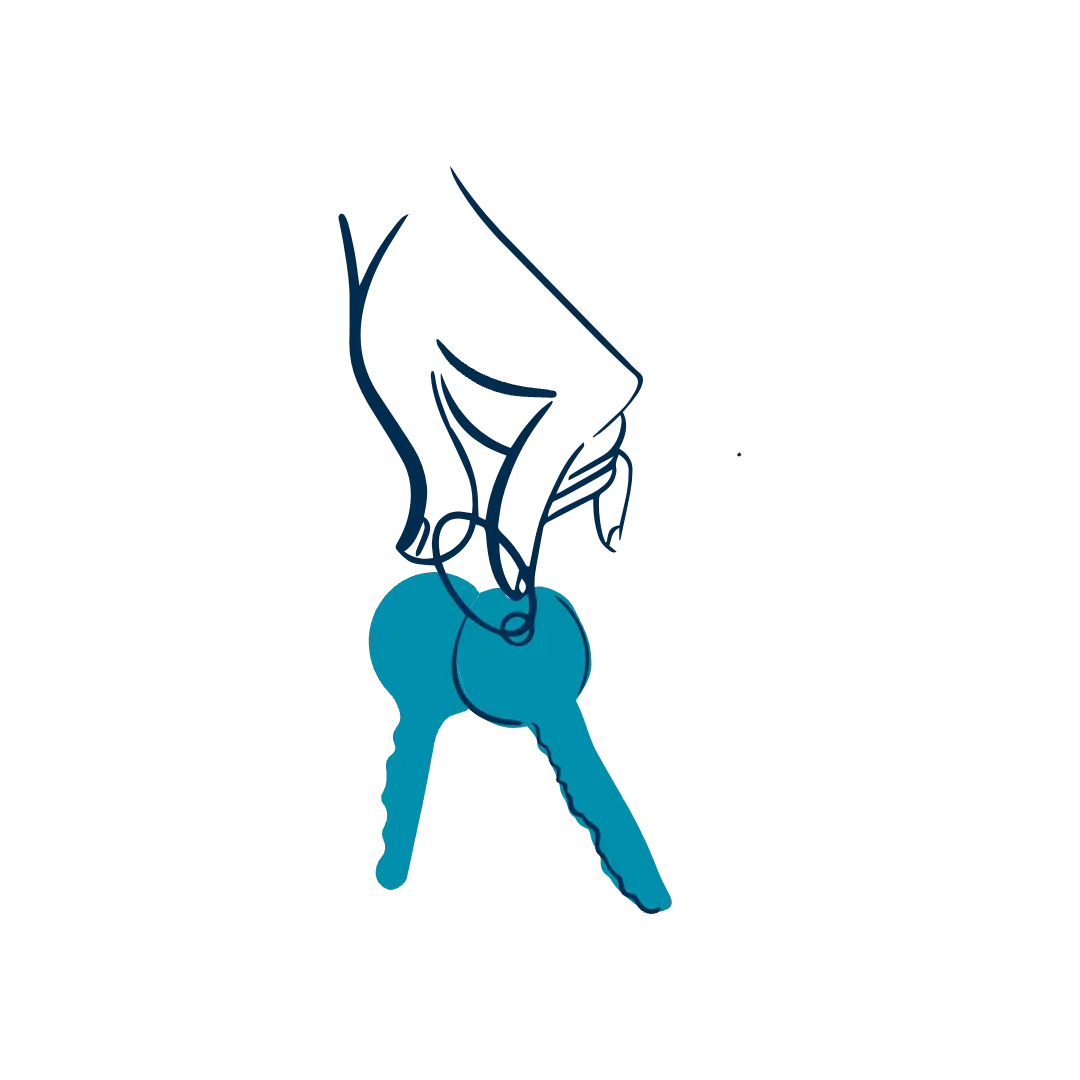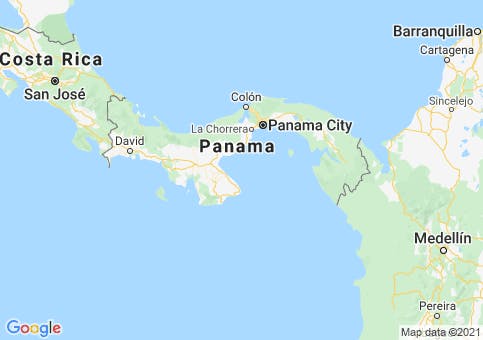By Gabriele Walkow
Nestled in the rolling ranchlands of Panama’s Azuero Peninsula, four hours driving time from Panama City, Las Tablas is a charming, welcoming, and picturesque town. Meandering through fertile farmlands, grazing cattle, and sweeping hills, the highway leading into Las Tablas sets the stage for this largely agricultural community.
Home to a lively town center, a friendly local population, and a culturally rich heritage, the capital of Los Santos province is one of the best places in Panama to live a stress-free, relaxed, and affordable retirement.
In addition, Las Tablas is located in a region known as the “Arco Seco” (Dry Arc) and enjoys some of the best year-round weather in Panama, during both the dry season (December to April) and the wet season (May to November).
Brimming with local charm, Las Tablas is also home to a host of professional services and amenities. And with the larger center of Chitre only 30 minutes away, expats can find everything they need.
Retire in Las Tablas, Panama
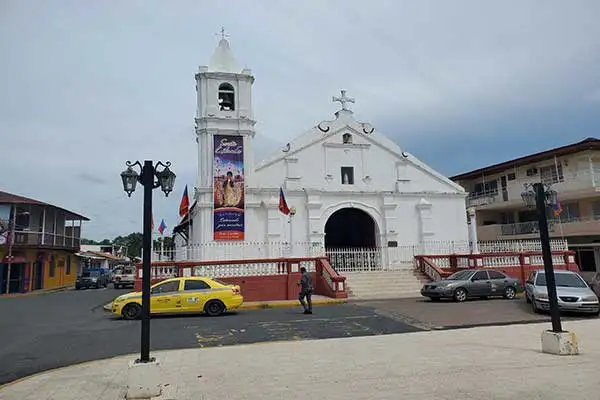
Located a few miles inland from the Gulf of Panama, approximately 10,000 to 12,000 people call Las Tablas home. This includes about 180 expats living in the town and its five principal beaches—Playa El Uverito, Playa El Jobo, Playa El Estero, Playa Las Comadres and the more remote Playa La Colorada. All the beaches are within a 10-minute drive to Las Tablas.
This area typically appeals to people who prefer a simpler, more traditional lifestyle, which includes fully integrating into the local community.
Friends and family, especially the elderly, are highly valued here and there is great respect for culture, customs, traditions, and folklore. Although more people are speaking English these days, most signs and menus are in Spanish only, so learning the language and/or using a translation app is highly recommended.
Las Tablas is home to three hospitals, several labs, dentists, and some other healthcare professionals. Dental cleanings run about $30 and extractions are $50. Larger hospitals and clinics, and a bigger roster of medical professionals, can be found in Chitre.
Several excellent restaurants include Dolce & Saladito with a great lunch menu for $5 and a delicious regular menu with veal parmigiana, hamburgers, and chicken. Casa 21 is known for the best pizza around and delivers as well. All feature fabulous fare and friendly, helpful staff.
Restaurante Q-charas offers a fine dining ambience and an international menu in the $8-12 range. A newcomer to the Las Tablas restaurant scene is the upscale Safari Gastro Lounge with a funky décor and home to marvelous margaritas.
On a more casual note, The Garage offers North American and Mexican comfort food with live music. A visit to the Las Tablas Brewery Co. to sample fresh local craft beers and top-quality pizzas is a must for microbrewery fans. For huge portions of authentic Chinese dishes head to the Food House in Montana Mall. And the best coffee and breakfasts can be found at Tacho‘e Cafe where their legendary waffles and pancakes with fresh fruit and a coffee will set you back $4.50.
For those seeking a fast-food fix, Las Tablas is home to a McDonald’s, Domino’s Pizza, and the recently opened and very affordable Pio Pio, which offers a varied menu of fried chicken and traditional Panamanian food.
Fondas (small, simple restaurants) are plentiful, very affordable, and popular with locals and expats alike for their savory traditional Panamanian food.
Both Super Carnes and Super Rosa offer a good selection of American and Panamanian groceries, including fresh meat, at low prices. Local vendors sell fruit, vegetables, and fresh seafood from their trucks near the entrances to both stores.
A new addition to the shopping scene in Las Tablas is the American-style one-stop-shop Super Xtra Market, where you can find everything from meat to seafood, a delicatessen, home and hardware items, and a pharmacy. In Chitre, there are additional larger supermarkets and home and hardware stores as well.
Bring your own reusable shopping bags as Panama has a plastic bag ban. And depending on where you live in Las Tablas, you don’t necessarily need a car as taxis are plentiful and inexpensive. And they are always parked nearby to take you home with your groceries.
Lifestyle in Las Tablas, Panama
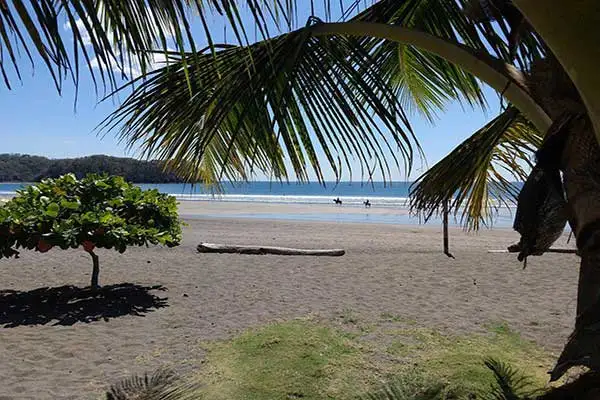
Avenida Belisario Porras is a bustling and colorful street running through the heart of town and takes you to the central plaza known as Parque Belisario Porras. Join the locals in Parque Belisario Porras to people-watch and get a sense of everyday life in a busy, conventional Azuero Peninsula town. Young and old gather under the trees and on the benches filling the air with laughter and chatter. With colorful hammocks, food vendors, and tiendas (stores) all around, this is the pulse of the town.
Visit the Baroque-style church, Iglesia Santa Librada, which stands on the corner of the park. Although much of the church was destroyed in a fire in 1958 and later restored, the church itself dates back to 1789.
Opposite the central plaza, delve into Panamanian history at the Museo Belisario Porras. Belisario Porras’ administration was in power during the construction of the Panama Canal. The museum is set in his former home and contains small artifacts and memorabilia from his life.
One of the main attractions of Las Tablas is its authentic culture, and people here take to the streets to celebrate with many annual festivals. Two of the most popular celebrations center around the polleras, the typical Panamanian costume and bring together locals and visitors alike.
During the vibrant Festival Nacional de la Pollera, held in July, hundreds of women wear elaborate handmade polleras, Panama’s intricate national dress, and dance in the streets to festive Panamanian music. A single pollera can take months to make and may be passed down from generation to generation—and they are a sight to behold.
Filled with color, heritage and pride, The Parade of One Thousand Polleras, is held every January. Over 6,500 gracefully dancing women take to the streets in their beautiful polleras accompanied by men also dressed in their traditional clothing. Colorful floats, traditional Panamanian music and late-night fireworks round out the festivities. Lasting for hours, don’t be surprised to see some of the crowd joining the parade to get selfies with the local celebrities taking part.
Carnaval, however, is Las Tablas’ biggest annual celebration. Thousands of locals, expats, and visitors from other Panama provinces, Panama City, and overseas fill the streets to see the ornate carnival queens, elaborate parade floats, fireworks, and marching bands, as well as to experience the non-stop dancing, music, and an abundance of food and drinks. Large water trucks that spray the partygoers provide welcome relief from the heat of the day! This multi-generational family affair, held over five days in February, is the most anticipated event of the year.
The area is centrally located for visiting several Azuero Peninsula gems. For a memorable day trip, travel the scenic road over the mountains to Tonosi, which then leads to the remote and beautiful beaches of Cambutal. And in Pedasi, a 20-minute boat ride from Playa el Arenal takes you to the gorgeous Isla Iguana Wildlife Refuge. This is an idyllic destination for swimming, snorkeling, and scuba diving in the warm, turquoise waters. Playa Venao, Panama’s bohemian surfing mecca, is another 35 minutes from Pedasi.
Things To Do in Las Tablas, Panama
Explore the Vibrant Town Square
As in most traditional Panamanian towns and villages, the town square and park are the central gathering place for friends and families. Surrounded by small shops, restaurants, cafes and vendors, this is the bustling, festive heart of the town and a great place to get orientated.
Head to the Las Tablas town square known as Parque Belisario Porras to mingle with the locals and soak up the hustle and bustle of everyday life in a pastoral Azuero Peninsula town. Shop at the colorful tiendas (stores) for a souvenir and sample some of the tasty fare from the food vendors.
Across from the town square, Iglesia Santa Librada makes for a perfect photo opportunity. This active Catholic church, dating back to 1789, is a marvelous example of Spanish Colonial architecture. The exterior has a striking bell tower, and the interior is adorned with fresco paintings. Beautifully lit at night, it exudes an old-world charm. The building is open to the public when there are no services and often music from the church spills out onto the plaza. The church is named after Santa Librada, the patron saint of the City of Las Tablas and the Province of Los Santos.
Located in front of Parque Belisario Porras, the Belisario Porras Museum opened its doors to the public on January 15, 1959. The museum contains many artifacts from the life and times of Porras and serves as a monument to his many accomplishments as a statesman. Gain valuable insight into Panamanian history while exploring the museum.
Relax at the Beach
Heading further afield with bathing suit, towel and sun umbrella packed and ready to go, visit the local beaches, especially popular Playa El Uverito. Relax and sunbathe in the warm sun, walk the lovely expanse of beach, go beachcombing for shells and sea glass, and sample some of the savory offerings in one of the restaurants.
Bring a rod and go surf fishing from any of the beaches. You’ll probably not be alone as surf fishing is very popular with the Panamanians. For a change of pace, take a kayak fishing tour and head out onto the calm water.
Visit Puerto de Mensabe
Take a day trip to see the colorful, commercial fishing boats at Puerto de Mensabe, south of Playa El Uverito, and watch the fishermen unload their fresh catches of the day. This working commercial port is filled with the sights, sounds and smells of the sea.
Challenge Yourself Hiking Pilon Waterfall
For an adventure of a different kind, hike to pretty Pilon Waterfall, about a 15-minute drive from Las Tablas in nearby Guarare. Surrounded by natural rock outcroppings and flora and fauna typical of this area, enjoy the spectacular setting and cascading waters.
Enjoy a Fonda Meal
Visiting a local fonda (small family-run restaurant) and experiencing typical Panamanian home cooking is a must. Frequented more by locals than visitors, a fonda is where you will meet and taste the real Panama! Traditional fondas offer a comida del dia (meal of the day), which usually consists of a choice of chicken, meat or fish served either with rice and beans or sometimes papas fritas (French fries) and an ensalada (salad). This local comida tipica (typical food) will set you back between $3.50 to $4.50 Buen provecho (Good appetite)!
Take a Wood Carving Workshop
Expats are often looking for hobbies and ways to keep busy once they arrive in their area of choice and have settled in. In Las Tablas, many of them head to Playa El Uverito to take carving classes with retired Canadian expat Phil MacCarver at his stunning home on the beach. Traveling from Chitre, Las Tablas, Pedasi and even Canas, they are introduced to the art of wood carving every Thursday afternoon. Phil supplies all the tools and materials.
Cost of Living in Las Tablas, Panama
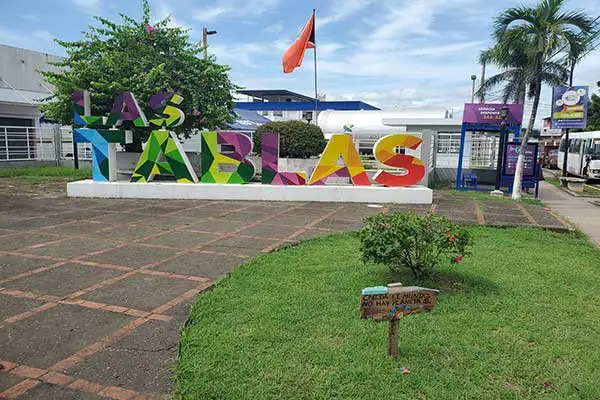
Generally, the cost of living in Las Tablas is lower than other places in Panama.
Monthly Budget Breakdown for a Couple in Las Tablas, Panama:
| Expense | U.S. $ |
|---|---|
| Rent (three-bedroom apartment in town) furnished | $650 to $850 |
| Rent (on the beach) | $750 to $1250 |
| Electricity | $35 to $125 depending on A/C use |
| Water | $6 (usually included with the rent) |
| Gas | $5 per month |
| Cell phone (x2) (Unlimited Data) | $45 per month |
| Internet | $35 in town/$65 at the beach |
| Transport (taxis, buses) | $20 |
| Groceries and household items | $475 |
| Dining out (eight meals per month) | $60 to $180 drinks included |
| Total expense in town: | $1,121 to $1,641 |
| Total expense on the beach: | $1,461 to $2,071 |
Best Neighborhoods to Live in Las Tablas, Panama
The beaches —Playa El Uverito, Playa El Jobo, Playa El Estero, Playa Las Comadres and the more remote Playa La Colorada—are the most sought-after neighborhoods, with most expats living in Playa El Uverito. This beautiful expanse of golden sand beach and calm crystal-clear waters draws expats from Canada, the U.S. and Europe in particular.
“With no rip tides or undertow, smooth sand, spectacular sunrises over the Pacific and driftwood arriving right at my front door, we have everything we can possibly want here,” explains MacCarver, who has lived in Playa El Uverito for 17 years. Offering a popular weekly wood carving class, it’s easy to understand his enthusiasm regarding the driftwood!
In addition to the beach areas, Las Tablas has a range of barrios (neighborhoods) from upscale to more typical Panamanian. Most of these small barrios are within a three-to-five-minute drive to Las Tablas.
Just north of the city, Mirador del Bosque is the most upscale barrio with its North American style homes and gardens. Although it is not gated, Mirador del Bosque has an exclusive feel to it.
Closer to the city center, Las Palmitas is another popular barrio with a charming Panamanian flavor. South of Las Tablas, El Cocal is a pretty barrio with a more rural feel to it and tidy homes and yards with hammocks swinging in the breeze. Nearby, La Tiza is a quaint and traditional Panamanian barrio as is neighboring El Sesteadero. And right next door, Santo Domingo is the largest barrio. Busy and lively with a strong community spirit, it has a village feel in a scenic rural setting.
In these barrios, expats and Panamanians live side by side and expats are integrated into the local culture, customs, and traditions. In addition to the many festivities in Las Tablas, these barrios have their own fiestas and particular folklore heritage. Music, festivals, foods and handicrafts play a large role and expats are warmly welcomed to learn about the Panamanian way of life.
In these barrios, a local artisan may live right next door, there’s probably a fonda (simple, Panamanian restaurant) just down the road and a panaderia (bakery) around the corner—all located in people’s homes. This creates a unique sense of community and hospitality.
Neighbors wave and greet each other with a warm smile and a Buenos dias (good morning) or just Buenos every day. They also enjoy chatting with passersby, including expats, as they sit on their porches and socialize with family and friends.
Although hand gestures go a long way towards communicating, learning some Spanish is highly recommended as your neighbors will probably not speak much, if any, English.
These barrios are nestled near the city center of Las Tablas and sprinkled throughout the rural outskirts of the area, which is home to lovely rolling landscapes, roaming livestock, Panamanians on horseback with dog in tow and diverse nature.
Getting off the main roads and taking an exploratory drive through these barrios and to the beaches provides a sense of what living in Las Tablas as an expat would be like. As you explore, friendly locals will wave and be happy to provide directions should you get lost, which is half the fun!
Safety in Las Tablas, Panama
Due to its bucolic, agricultural setting, deep cultural roots and strong family values and traditions, safety doesn’t seem to be an issue in Las Tablas. So much so that people often leave their doors and cars unlocked without a worry.
“Whether it’s downtown Las Tablas or on any of the beaches, you can walk as a single woman or as a couple, even late at night, with no security issues at all,” says MacCarver.
“You can get a sense of the strong emphasis on family here just by sitting in the town square at night,” he continues. “The park is filled with families chatting and laughing while the kids are playing and chasing each other well into the evening.”
In addition, the warm weather in Las Tablas lends itself to people sitting outside at restaurants and fondas late into the balmy night, so there is always a sense of security present.
In the barrios, people sit out late on their porches and patios visiting, listening to music and just watching the world go by. Everyone seems to know everyone, creating an important sense of community and safety.
Of course, as always when traveling or living somewhere part-time or permanently, common sense and your intuition should always prevail.
The Takeaway
Las Tablas is one of the safest and most affordable towns in Panama. If traditional living with amenities nearby by, a supportive, local community, and year-round warm weather are calling your name, then Las Tablas should be on your radar.
Retire in Las Tablas, Panama for $1,000 a Month
by Jessica Ramesch
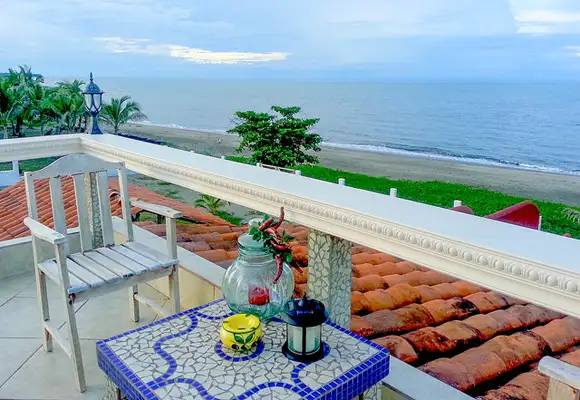
Located on Panama's Pacific coast, little Las Tablas is Panama at its best. This town of under 30,000 people lies on the Azuero Peninsula, a region renowned for everything from colorful Carnival celebrations to artisanal textiles, pottery, and leatherwork. Life in this region of Panama is good.
It is graced with more sunny days and less humidity than any other part of the country. And the cost of living is the lowest in Panama: Here, a couple can easily live on $1,000 a month, including rent, as expats Joyclyn and Armand Brodeur have found out.
Originally from St. Louis, the Brodeurs came to Las Tablas in August 2014 to test-drive their Panama retirement, so to speak. Armand, 66, and Joyclyn, 59, long yearned for a tropical, beach lifestyle. At the same time, they wanted to choose a place where it was possible to live on a Social Security check. “Las Tablas fits the bill,” they say, citing the excellent infrastructure and affordable healthcare.
The Brodeurs chose Las Tablas so they could live well, without sacrificing the good things in life. They were amazed at the local supermarket prices…$0.55 for a beer and $4 for a bottle of wine. Armand says, “I treat myself to Clan MacGregor scotch at $9 a bottle, about the same as up north. Bacon is about $4 a pound, but it costs even more in St. Louis.” Even so, they spend just $65 a week on groceries.
Utilities are also extremely inexpensive. Their first power bill was around $20 (no air conditioning). “Our water is included in our rent, and trash pickup is $18 a year,” they say. Vonage internet phone service is $32 a month and allows for toll-free calls to the U.S. and other countries. Add to that another $30 to $40 a month for two cellphones (calls plus data) and $52 for bundled cable and internet.
The Brodeurs are most enthusiastic about the quality and affordability of the healthcare, however. Both have been to a local dentist and were impressed with the offices, equipment, and thorough manner. “She’s the best dentist I ever had,” says Joyclyn. “Armand went in for a broken tooth and paid just $15.”
“I thought I heard wrong,” he says. “She spent an hour and a half on me; it was like a minor surgery. And there was no pain. They are not stingy with the Novocain down here.”
With more money in their pockets and no shortage of time on their hands, the two have been able to fully immerse themselves into the local way of life. At a recent festival in rural Panama, Joyclyn and Armand had one of their first brushes with Panama’s colorful culture. “I saw a bull run, and it was fascinating,” says Joyclyn. There were oxcarts painted in bright primary colors, local boys in traditional garb, and girls in richly embroidered polleras—Panama’s much-admired national costume.
“They would pose and display their dresses,” she says. “It was the best party I had ever seen. I even danced with an older local man. The music was playing and he was twirling me around,” she says, smiling at the memory.
The people of Panama are another major plus for the Brodeurs. “The neighbors are very friendly and we are inundated regularly with gifts of wonderful Panamanian food,” says Armand.
When they’re not dancing and socializing, you can often find Armand and Joyclyn enjoying their home in Las Tablas. “The day starts with Panamanian coffee—usually on the front porch. We have a papaya tree in the backyard and have fresh papaya regularly for breakfast,” says Armand. It’s a simple, effortless lifestyle... though the nearby beaches do make it sound a bit glamorous.
In the Pedasí region, about 45 minutes away by car, are some of Panama’s most pristine stretches of sand. And the fishing is legendary. But the ocean-loving Brodeurs don’t have to go far to get their fix. The craggy shores of Uverito beach are mere minutes from the Las Tablas town square.
“Our anniversary was in December, and we spent it at Uverito,” say the Brodeurs. Christmas Day and New Year’s Day found them back again, enjoying the beach alongside many locals. “We lament to friends on Facebook about the grueling 11-minute drive to the beach,” Armand jokes.
Trips to Uverito aside, the Brodeurs do most of their traveling by foot, as many of the locals do. And all the walking has had an unintended effect. “We have dropped an incredible amount of weight,” says Armand. “And we’re not even eating as healthy as we ought to.” Joyclyn says walking is also the best way to get the lay of the land. “I know where to go for a lot of things now…and with the hot weather, we don’t eat as much. I’ve dropped a whole size,” she adds.
Las Tablas is a far cry from Panama City. You’ll find no skyscrapers here…in fact, structures more than two stories tall are rare. Condo living is more of an abstract concept here, as people tend to live in boxy, wide-terraced homes. In most cases, they are framed by greenery that runs right up to the road. Here and there is a casa de quincha, a country cottage made the old-fashioned, wattle-and-daub way, with clay and straw.
The town plaza is graced by a small, white, colonial church. Like most of Las Tablas, it is unassuming, though visitors who enter are met with the soft glow of the ornate gold altar, a relic from Panama’s earliest colonial days.
A short walk from the main plaza, the Brodeurs have rented a small home for $200 a month. They paid $600 for a slightly upscale apartment during their first month in Las Tablas. It was ready to move into and in a central location, so it worked while they were getting settled. Soon, however, they were ready to try a local-style home. They just did a bit of networking—and used the few words of Spanish they’ve learned since their arrival. It paid off. An expat introduced them to a local homeowner and the next thing they knew, they were signing a new rental agreement.
These days, the Brodeurs say they have many more friends— both Panamanian and expat—than they did “back up north.” Life is more social and more fun. As Las Tablas is at the nation’s center, they can travel anywhere with ease. They recently visited Panama City—it’s about four hours by car due east. The western province of Chiriquí is similarly close, so they’re planning a trip to the highland towns of Boquete and Volcán Barú in the near future.
Will the Brodeurs stay in Las Tablas? Who knows—they are still exploring the country, and they’re keeping an open mind. A few months into their “test-drive,” however, they’re already quite certain that Panama is right for them. “I wanted access to the ocean, friendly people, and palms…and I got it all,” says Joyclyn. “It would not break our hearts to live in Las Tablas for the balance of our days,” says Armand.
How to Ease Into Panama
To live in Las Tablas, you will need a little Spanish. “It turns out there are more English-speaking people here than we thought,” say the Brodeurs. But they studied for two weeks at a Spanish school in Panama City and highly recommend it.
An attorney himself, Armand says to waste no time getting to a lawyer. He and Joyclyn contacted immigration attorney Rainelda Mata-Kelly before traveling to Panama. She gave them all the requirements for the famed Pensionado program. “Thanks to her good offices, we already have our visa,” he adds.
Anyone with a pension of at least $1,000 a month ($1,250 for a couple) may apply for the residence program. And members get access to Panama’s government-mandated retiree discounts. These are wide-ranging. The Brodeurs are entitled to 25% off their power bill, 50% off entertainment, and 10% to 25% off medical expenses, restaurant bills, transportation, and more.
Featured Image Copyright: ©Gabriele Walkow
